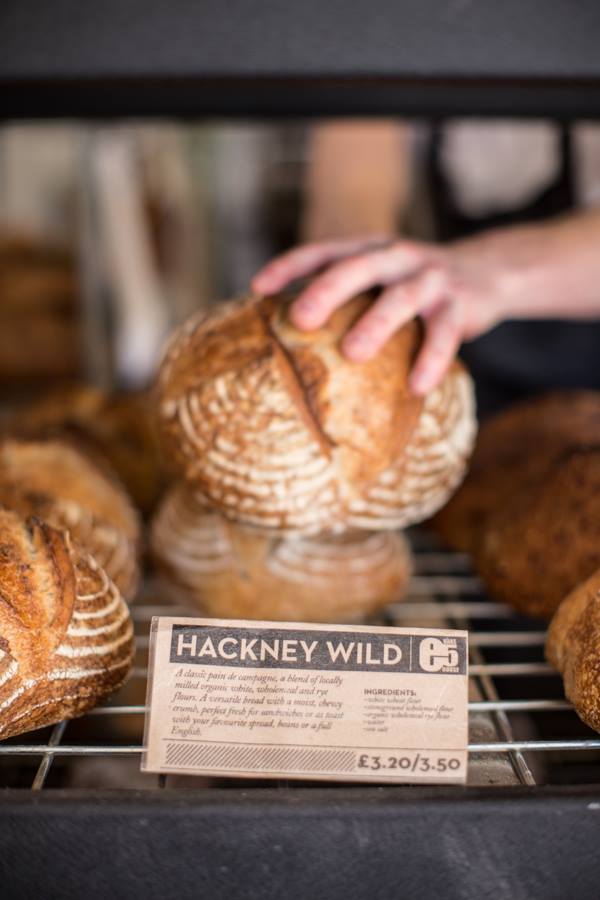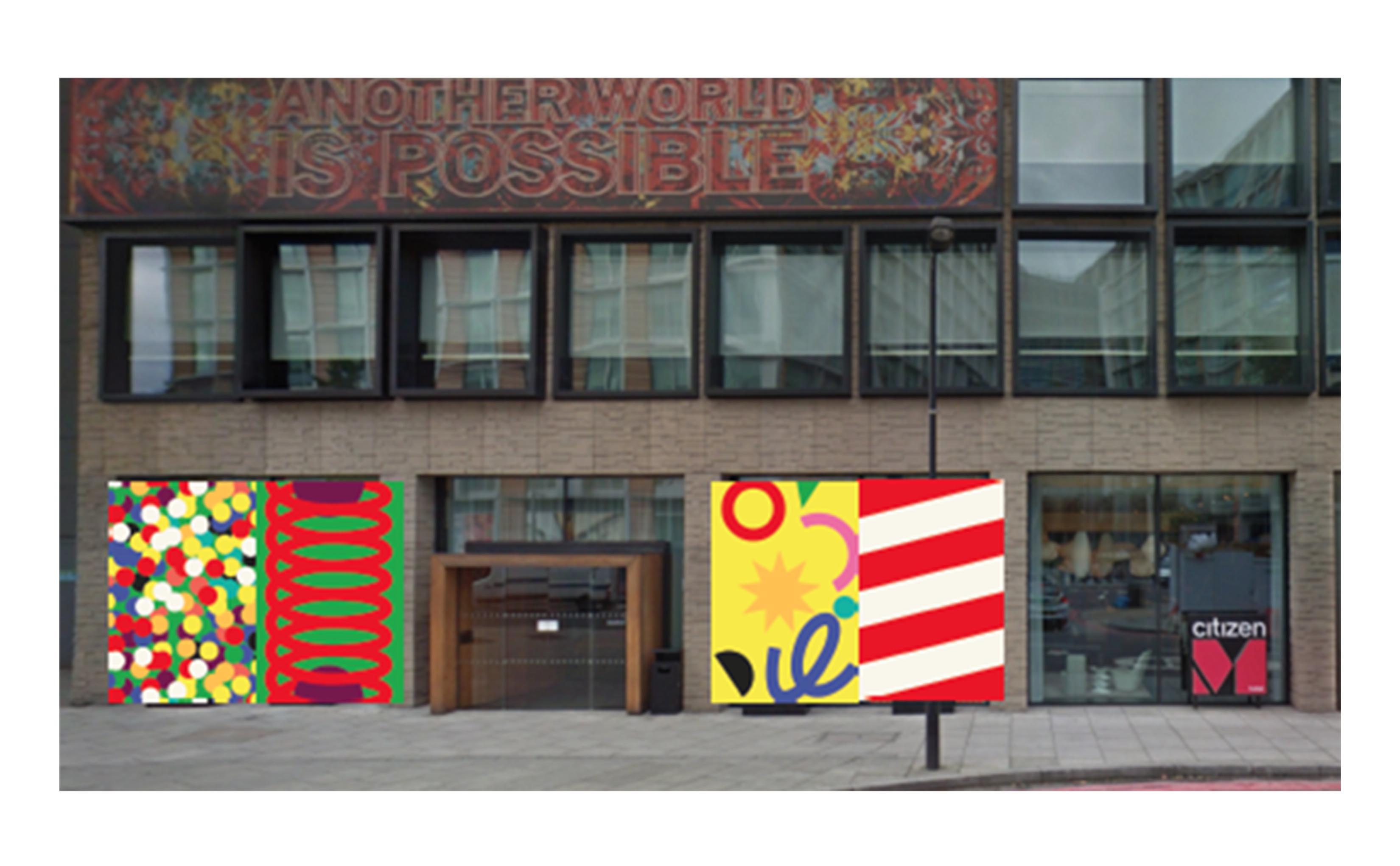
The e5 Bakehouse Farm – An experimental search for the best bread
This January, with the wind blowing a hooly and the weather as interchangeable as my mum switching her outfits before a dinner, while many were wrapped up indoors I stood with Ben, owner of e5 Bakehouse and good friend John looking out onto acres of glorious experimental farming.

 Ben is no ordinary baker, and e5 no ordinary bakery. One of the only bakeries to source all UK organic grains, the team not only bake the most delicious bread but also are constantly on the hunt to make it more nutritious for us and the environment.
Ben is no ordinary baker, and e5 no ordinary bakery. One of the only bakeries to source all UK organic grains, the team not only bake the most delicious bread but also are constantly on the hunt to make it more nutritious for us and the environment.
Rye, spelt, emmer and einkorn are just some of the cereals Ben and the team have been playing with, but it goes deeper than just trying the newest food fads. Pretty much all the grain or flour you will buy in the shops is sourced from fields of genetically identical crops and most will be a modern wheat, varieties bred for high yield and high protein content (makes the fluffy bread we have controversially come to know and love). However e5 have been dabbling for a while with heritage grains, genetically diverse populations and landrace.

Oops sorry nerdy grain jargon. We’ll be publishing a series of articles in the next couple of months demystifying some of the more complex parts of farming and food – so stay tuned for easy to read heritage and modern grain mythbusting! Also I’ve popped some of the terms I’ve used here in a mini dictionary at the bottom of this post.
Anywho, we spend the day rotivating (ploughing) the new veg patch ready for a season of growing produce for the café back in London. It was glorious to have my hair whipped around my face by the wind and feel the farming tools beneath my hands. Don’t get me wrong it was hard graft, and it was a welcome pit-stop to stand in the countryside, watching the sun slouching below the skyline and breaking bread (and eating homemade soup and cheese) with friends. But there is something super rewarding about working outdoors on the land.

Covering the turned ground with bran from the mill!
The e5 way of farming poses another debate: one of cultivating the land and tilling (ploughing). Currently in the UK to grow organic food you cultivate (or plough) the soil to decrease compaction and keep the weeds at bay. However this disrupts the soil and all the complex organisms within. As a good friend once said “It’s never black and white, only multi-coloured”. The team at e5 only go down about 3 inches or what is called ‘minimum tilling’, which is a lot less than the conventional 12 inches. Also they are exploring the use of these heritage grains for reduced tilling. This displays the need for more research on how we combine no-till and organic farming both of which are building blocks for agroecology. It’s a work in progress!
All too quickly the day drew to a close and the sun had hunkered down below the horizon. Before we left, Ben invited me to plant some heritage landrace wheat (although really the wrong time of year but we are all about experimenting)


Heritage grain population trials
I bent down and scooped up the earth between my hands making a groove for my seeds. As I did I saw worm, a sign of healthy soil, and smiled. It’s good to be outdoors. I covered my seeds over and found a stick to mark our population (well Ben did, my stick was naff, like the runt of the stick litter and fell apart as soon as I poked it in the soil). I stood back, dirt smeared everywhere and admired our work. I think it’s going to take a bit more practice to be a real farmer!

Maybe these ancient grains and diverse grains hold the key to agroecological farming, maybe they hold the key to pest and weed resilience, and maybe even to restoring some of the nutrient content in our food.
I feel this is a start of a journey where we might just find out.
Reporter and farmer for the day: Abi Aspen Glencross ¦ T: @AbiAspen I: @AbiAspen ¦ futurefarmlab.com
Dictionary
Agroecology: A type of farming with is based on production best using natures goods and services while limiting the impact on these resources by viewing the whole farming area as an ecosystem
Einkorn: An ancient hilled wheat, higher in protein and minerals than modern wheat, lower yielding, lacks riding characteristics of modern wheats, draws nutrients from poor soil, presents difficulties in separating husk from seed
Emmer: Hulled farro wheat, one of the first ever domesticated crops, grows well in poor soils, good fungal resistance,
Genetically diverse grains: Where each organism has variations in their DNA. Can be within crop (e.g. within a wheat population) or between crops (planting different crops together e.g. carrots and onions)
Genetically identical grains: Where organisms are exact genetic copies, all DNA is the same.
Hulled wheat: strong husk (hull) that enclose the grain
Landrace: A genetically diverse population of cultivated plants or animals with historical origin that have been locally adapted over time using traditional farming methods.
Modern wheat: A cross bred dwarfed wheat variety bred for high yield and high protein content
Organic food: A product that is produced by organic standards including: non-GM, nutrient cycling, restriction in pesticide and fertilizers, no synthetic additives, no growth hormones etc.
Rotavator: A mechanically agitator which prepares the ground for seed beds
Rye: A grass, grows well in poor soils, survives cold weather, used often as a cover crop, helps prevent soil erosion, high protein,
Spelt: A type of hulled wheat (farro), can be an ancient grain however often has been cross bread, nutty flavour, low yielding in comparison to modern wheat, thrives in poorer soils, resistant to weather extremes, thick husk protect from insects etc., this husk can make it easier for store for longer
Tilling: Preparing the soil by mechanical agitation
Yield: Amount of a produce



